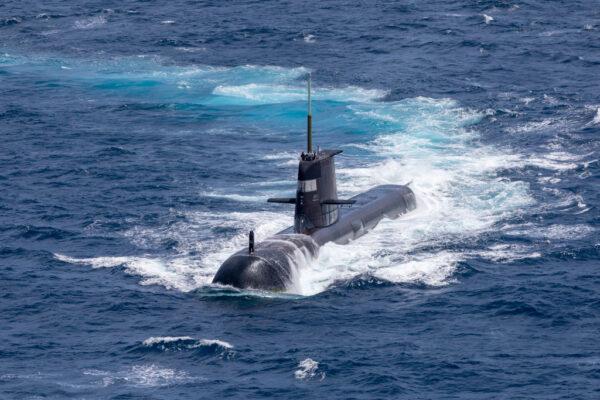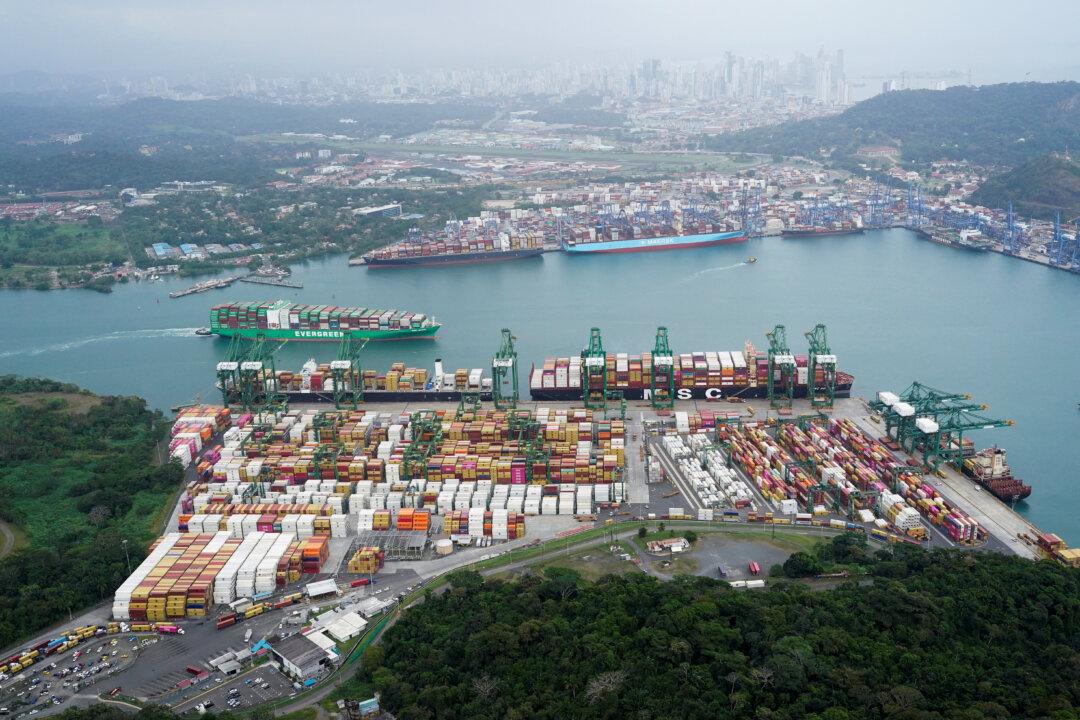Chinese Communist Party (CCP) leader Xi Jinping is working hard to ensure that the United States moves its strategic center of gravity back to the Atlantic and away from the Indo-Pacific.
But even strong moves to show a People’s Liberation Army Navy (PLAN) thrust into the Atlantic may be insufficient to divert anything but a small proportion of U.S. strategic assets away from the Indo-Pacific.
Even so, any reduction in U.S. and allied force capabilities and priority away from the Indo-Pacific would be regarded as a bonus for the PLA in its gaming of potential conflict closer to the Chinese mainland.
Beijing has begun moves to build basing facilities in the Atlantic in Guinea-Bissau on Africa’s Central West coast, and on the Portuguese Azores island chain in the mid-Atlantic. It has also pushed the leftist government of President Alberto Ángel Fernández in Argentina to resurrect the threat to British ownership of the Falkland Islands in the South Atlantic as a means of pulling Britain’s limited naval capabilities out of the Indo-Pacific.
By December 2021, Beijing was strenuously attempting to distract Washington from focus on the new AUKUS pact between Australia, the United Kingdom, and the United States. AUKUS, explicitly driven by Australia as a global alliance with an Indo-Pacific centrality, threatened to become “the alliance of the future” between three Anglophone powers, which together would have global geopolitical reach on an unprecedented scale.
AUKUS was beginning to come into focus in mid-December as officials from the three pact members were being designated into working groups, with the initial focus of increasing the Royal Australian Navy’s submarine capacity in the Indo-Pacific, elevating it to nuclear-powered status.
U.S. President Joe Biden sent a request to Congress on Dec. 1 to approve an 18-month negotiating period to transfer nuclear power technology to Australia “to seek an optimal pathway for delivery of nuclear-powered submarines for the Royal Australian Navy at the earliest achievable date.”

Beijing’s latest “distraction operations” are not a new stratagem. It has moved several times over the past decade to force a Western focus on Atlantic and European defenses to avoid a revived competition in the Indo-Pacific. It did so even when it was striving to rebuild the logistical supply lines in Africa so that China’s trade would be focused on the East Coast (Indian Ocean) ports, with new road and rail links taking even West African trade to and from ports on the East African coast, particularly the new Chinese-controlled port at Lamu, in Kenya.
The Namibian newspaper on Jan. 20, 2016, confirmed earlier reports that China was negotiating the construction of a PLA Navy base at Walvis Bay, Namibia, and wanted to build 18 “overseas bases,” including the Walvis Bay base, as well as in North Korea (at Chongjin), Thailand (at Koh Lanta), and in other locations in the Pacific, Indian Ocean, and Atlantic. The expansion of the Indian Ocean ports of Gwadar (Pakistan), and Lamu (Kenya) were then already well underway, and there were plans for naval porting in Tanzania, as well. At that time, China had not necessarily considered that it would be able to obtain military basing rights in Djibouti, due to U.S. and French influence there, but subsequent U.S. diplomatic gaffes pushed Djibouti President Ismaïl Omar Guelleh in 2015 to offer basing to China.
It is unclear whether the 2020-21 “secret” talks between CCP officials and Equatorial Guinea President Teodoro Nguema Obiang Mangue were meant to be secret, or whether they had the dual intent of securing a new naval facility at Bata, on the country’s Gulf of Guinea mainland coast, and scaring the United States into refocusing on the Atlantic. But Washington took the bait.
The Wall Street Journal noted on Dec. 5: “Principal deputy US National Security Adviser Jon Finer visited Equatorial Guinea in October (2021) on a mission to persuade President Teodoro Obiang Mangue, to reject China’s overtures.” Until now, Equatorial Guinea had been locked into security and trade commitments with the United States, with U.S. energy giant Exxon Mobil controlling the country’s extensive oil and gas reserves.
However, in January 2020, Exxon Mobil was openly discussing plans to sell its Equatorial Guinea holdings, including its operating stake in the Zafiro field that produced 90,000 barrels a day and delivered most of the country’s output.
That suddenly opened the country to a total change in strategic direction.
Further north, in the Central Atlantic, another Beijing move has emerged. A September 2021 think tank report, titled “Evolving the Five Eyes: Opportunities and Challenges in the Strategic Landscape,” noted: “China has identified the Azores as an essential Atlantic hub and has thus been buying up facilities in these islands, such as abandoned US storage facilities and a French hotel in which it can base 500 troops. Notably, the Azores is key to the security of undersea cables. China plans to build an air base at Lajes on the [Azores] island of Terceira.” The report, by John Hemmings and Peter Varnish, was published by the Canadian Macdonald-Laurier Institute and the U.S. Daniel K. Inouye Asia-Pacific Center for Security Studies.
Undersea communications cables are a key focus of Beijing. They are virtually all outside its control. Its focus on the Solomon Islands in the South Pacific has been linked as much as anything to its proximity to major trans-Pacific undersea communications cables.
Beijing has openly pursued basing, investment, and territorial access to lands in the Atlantic Arctic region; and has already strong trade, intelligence, and political operations through South and Central America and the Caribbean. Indeed, it has real strategic objectives in the region, but none of these outweigh the need to stop the United States’ overwhelming focus on the Indo-Pacific and AUKUS.





